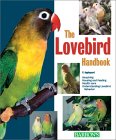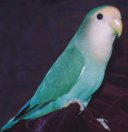The Well-Groomed Bird
A happy bird is a well-groomed bird. You can tell them when you see them. Feathers are soft and vibrant; the bird looks magnificent when it fluffs up its body and stretches out its wings. The difference can often be quite evident between a bird who is regularly groomed or bathed and one who isn’t.
A Refreshing Shower
Most birds love a shower. Some like the water to be misty and warm, some prefer a more vigorous shower with cooler temperatures. If you start experimenting you will soon find what type of bathing sends your bird into ecstasy. It can be a sight to behold when your bird stretches out its wings and relishes the refreshing water coming down on its body. The first rule of thumb is not to batter your bird with water. If it is too rough, they will try to avoid it. Generally they prefer a misting. This doesn’t mean you can’t thoroughly soak the bird. If you mist them enough, they can get soaked down to the skin. For most species, it is a good idea to soak them to the skin atleast once a week, then you can give them a less thorough misting the rest of the week. Certain species like a daily shower or misting, such as amazons. This can also help with the strong musky odor amazons have that can bother some people. Bathing is another option. Many birds will hop right into a large bowl of water and soak themselves. Some birds will just dip a toe in and wash the feathers around the head mainly. Sometimes splashing your fingers in the water in the bowl will tempt them to jump in.
Wing & Toenail Trims
If your bird is a tame pet that is often out of the cage it is generally safer to trim the flight feathers. There is much disagreement about this. Some people have arranged their homes in such a way that it is safe for their birds to be fully flighted. However, you must take into consideration many factors before keeping your birds this way. They usually need what is called a “bird-safe” room. This room does not have doors or windows that open to the outside. This gives added protection against surprises, such as a startled bird flying past you as you open the door for a delivery or the like. In most homes it is safest to have your birds flight wings trimmed regularly. Don’t become complacent, however. A few flight feathers can be enough for your bird to get enough lift to disappear down the street. This is particularly true for smaller birds and those with narrower bodies, such as cockatiels.
Choosing a Groomer
Don’t just take your prized parrot to any local pet store and ask them to trim your bird’s wings and toenails. You should always inspect the store first and watch them do a few trimmings before choosing them as your bird’s groomer. Also consider having your avian veterinarian do the regular trimmings. This helps you establish a relationship with your vet so they know your bird well should an emergency ever arise.
Ask yourself a number of questions before deciding on using a particular person to groom your bird:
1. Do they use a different towel to hold each bird? Are they clearly putting the towel they just used into a laundry pile? Or are they folding it up to use on the next bird that comes in the store? This is an extremely important point. You don’t want your bird wrapped up in a towel that was just wrapped around a bird with an infectious disease. Even a very healthy appearing bird can carry disease, and you should never risk using the same towel on birds from different homes. You could also bring your own small towel and ask them to use that to hold the bird. Make sure it is an appropriate size and thickness for such a job.
2. Do they clean their grooming equipment between birds? If they are trimming toenails, they are occasionally going to cut too high and get a little blood on the clippers. If they are not cleaning the utensils between birds, this can be another vector for spreading disease. As most of you probably already know, blood is considered a hazardous biological substance. In human medicine it would be unthinkable to use such a contaminated item on another patient. Grooming utensils should be cleaned with rubbing alcohol.
3. Do they work in a team, one holding the bird securely while the other trims and deals with any bleeding or other issues? Does the team work well together? Obviously, some birds will put up quite a fuss during a trimming. How they are handled can lessen their stress. One groomer would send my senegal into an utter state of terror. The sounds he made were horrible. The current groomer never elicits this response from him. He clearly hates being wrapped in the towel, but he doesn’t sound as if he thinks he’s being tortured the way he did with the previous groomer. You know your bird. If the sound is something you don’t usually hear and it sends a chill down your spine, you might want to try another groomer.
4. Does your bird tend to panic and react in an extreme manner to the stress of grooming? If this is the case it is highly advisable that you take your bird to an avian veterinarian for its grooming. This way they can deal with any medical emergency that might arise during grooming. A bird that has a problem with panic or extreme stress reactions can get into trouble on occasion. Seizures or heart attack are rare, but should they occur you will want your bird to be in the hands of a vet and not a groomer at a pet store.
You should always have styptic powder on hand at home should a toenail that is cut too short start bleeding again. While this is rare, it is a good idea to have a blood-stopping agent in the home just in case. A good home remedy for any type of uncontrolled bleeding is common household flour. It will stop up a bleeding toenail or blood feather in most cases. Of course, if you do have a broken blood feather, the best solution is to pull the feather out from its base to stop the bleeding. This can be done with a pair of tweezers. For most large birds, you will need someone to hold the bird still while you do it. There are some articles on this available on the Net.
The next time you see a bird that looks exceptionally vibrant and healthy, ask the owner a few questions. How often do they shower them? What diet do they feed? This can be a great way to learn how to improve your own bird’s health and appearance. There is nothing quite as breath-taking as a beautifully groomed and well cared for bird!










